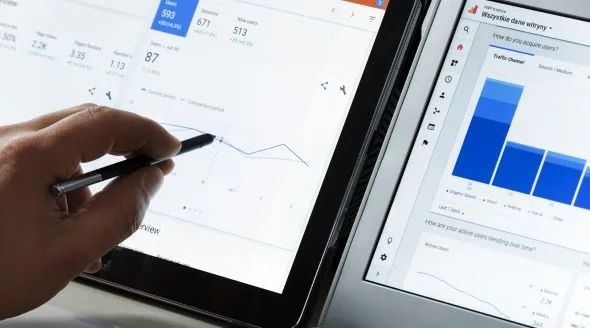Business
Digital Pulse: How to Check Your Website’s Traffic

In the digital era, a website serves as the heartbeat of your online presence. Whether it's a blog, an e-commerce platform, or a corporate site, understanding its performance is crucial. Checking your website’s traffic isn’t just about numbers; it’s an exploration into what resonates with your audience, how your content performs, and where your marketing strategies land. With the right tools at your disposal, you become a digital navigator, steering your site towards growth and success.
This article will walk you through how to check website traffic effectively, highlighting pivotal platforms including Google Analytics, Moz, and the collective wisdom found on Wikipedia.
1. Start with Google Analytics
Standing at the forefront of analytics tools is Google Analytics, a powerhouse loaded with features yet remains user-friendly for beginners and professionals alike. This free service offers a comprehensive look into your site’s traffic, detailing visitor demographics, behavior, and acquisition channels.
Setting up is straightforward: after creating an account, you’ll receive a tracking code to embed on your webpage. Once live, you can monitor everything from real-time visitor activity to long-term trends. It's an invaluable tool, offering insights that help refine your content strategy, improve user experience, and increase engagement. For anyone looking to check website traffic, Google Analytics is the cornerstone.
2. Lever through Moz for SEO Insights
While Moz is renowned for its SEO tools, it also provides excellent resources for tracking website visibility and performance in search engines. Through tools like Moz Pro, users can delve into keyword rankings, domain authority, and backlink metrics, all of which impact traffic volume and quality.
Moz’s insights can guide you in enhancing your website’s SEO framework, thereby improving organic search traffic. It’s a testament to understanding that traffic isn’t just numbers; it’s about drawing the right audience through strategic optimization.
3. Understanding of Wikipedia
Although Wikipedia itself isn’t a tool to check website traffic, it embodies the significance of quality content and navigability in attracting visitors. An article or a mention on Wikipedia can significantly increase website traffic, serving as a testament to the value of credibility and informative content.
Additionally, Wikipedia’s extensive articles on digital marketing tools and strategies can be a goldmine for anyone looking to deepen their understanding of traffic analysis and website optimization.
4. Ubersuggest for Competitive Analysis
Created by Neil Patel, Ubersuggest is a versatile tool that goes beyond SEO by offering insights into competitors’ traffic. It provides an easy-to-understand overview of what's driving visitors to your rivals' sites, including keywords and backlink strategies.
By understanding your market position, you can tailor your strategies to carve out your niche or outperform competitors in specific areas, making Ubersuggest an essential tool for anyone aiming to boost their website’s visibility and traffic.
5. Harness SEMrush for In-depth Analysis
SEMrush is a remarkable tool for those who want to dive deeper into analytics and hone their competitive edge. It offers a detailed look into traffic sources, including organic search, paid search, and social media. With features such as traffic analytics and market explorer, SEMrush provides a holistic view of your website’s performance and opportunities for optimization. It’s particularly useful for businesses aiming to expand their reach and understand their position in the broader market landscape.
6. Utilize Social Media Analytics
Last but not least, don’t underestimate the power of social media platforms as traffic sources. Most social media sites offer their analytics tools, giving insights into how your content performs and drives visitors to your website. Understanding which posts generate traffic and why can help refine your social media strategy, ensuring that your efforts contribute to your website’s overall traffic growth.
Checking your website’s traffic is an ongoing process that requires curiosity, adaptability, and a willingness to learn. Each tool mentioned offers a unique perspective into different facets of your website’s performance, from visitor behavior to competitive positioning. The key is to combine these insights to create a multi-faceted strategy that elevates your website’s visibility, engagement, and growth.
In navigating the digital waters, remember that the goal isn’t just to increase numbers but to understand the stories behind them. Why do visitors come to your site? What content captivates them? Where do they come from? The answers lie in the analytics. Checking website traffic transforms from a routine task into a strategic endeavor, one that shapes your website into a more powerful, engaging, and successful platform.
In conclusion, the journey of checking your website’s traffic opens up a world of opportunities for growth and engagement. By leveraging tools like Google Analytics, Moz, Ubersuggest, SEMrush, and the strategic insights gained from platforms like Wikipedia, you possess the compass to guide your site towards uncharted territories of success. It’s about weaving together the narratives found in data, optimizing your strategies, and creating a website that resonates with your audience.
Become the master of your digital domain, where https://www.sparktraffic.com/check-website-traffic checking website traffic becomes not just a task, but a pathway to understanding and enhancing your online presence.




